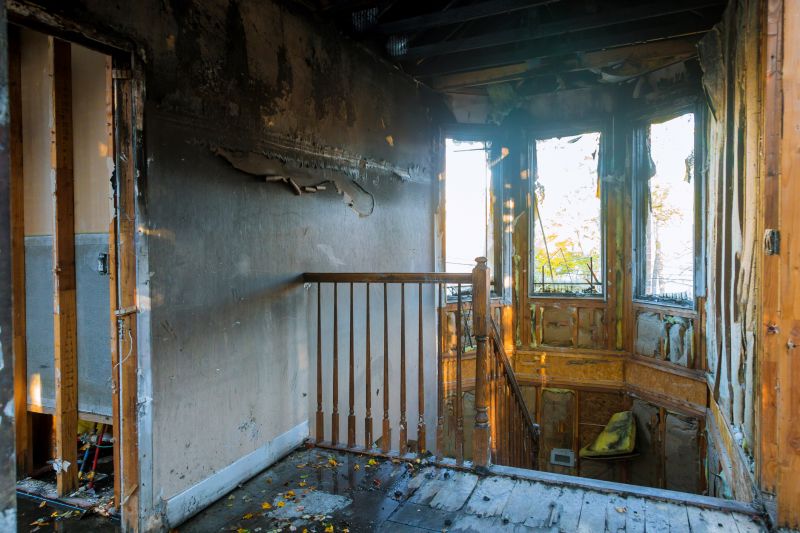Leading Fire Restoration Tools And Materials For Quick Recovery
Identify key products that streamline the restoration process and help you achieve optimal results after fire incidents.
 Fire restoration products are essential tools and materials used to repair and rehabilitate properties affected by fire damage. These products encompass a wide range of solutions designed to address different aspects of fire damage, including soot and smoke removal, odor neutralization, structural repairs, and surface cleaning. Proper selection and application of these products can significantly influence the efficiency and effectiveness of restoration efforts.
Fire restoration products are essential tools and materials used to repair and rehabilitate properties affected by fire damage. These products encompass a wide range of solutions designed to address different aspects of fire damage, including soot and smoke removal, odor neutralization, structural repairs, and surface cleaning. Proper selection and application of these products can significantly influence the efficiency and effectiveness of restoration efforts.
Top Overall Option
Multi-Purpose Fire Restoration Cleaner
A versatile cleaning solution designed to effectively remove soot, smoke residues, and stains from various surfaces. It is suitable for use on walls, ceilings, and other affected areas, helping to facilitate thorough cleaning in fire-damaged properties.
Types of Products For Fire Restorations
Soot and Smoke Cleaners
Specialized solutions formulated to break down and remove soot and smoke residues from surfaces.
Odor Neutralizers
Products designed to eliminate or mask persistent smoke odors in affected areas.
Fire-Resistant Drywall
Building materials that provide enhanced fire resistance for structural repairs.
Surface Degreasers
Cleaning agents used to remove greasy residues left by smoke and soot.
Sealants and Primers
Materials that lock in odors and prepare surfaces for repainting or finishing.
Personal Protective Equipment
Respirators, gloves, and protective clothing to ensure safety during restoration work.
Fire-Resistant Paints
Coatings that provide additional fire resistance to surfaces and structures.
Thermal Imaging Cameras
Tools used to detect hidden hotspots and areas of residual heat post-fire.
Structural Reinforcement Materials
Products such as fire-retardant plywood and steel reinforcements for structural repairs.
Cleaning Cloths and Brushes
Tools for manual cleaning and surface preparation.
Electrostatic Sprayers
Devices for applying disinfectants and odor neutralizers evenly over large areas.
Dehumidifiers and Air Movers
Equipment to control humidity and promote airflow during the drying process.
Popular Choices
Widely used products that help reduce smoke odors in fire-damaged spaces.
Comprehensive kits containing cleaners and tools for soot cleanup.
Commonly selected for structural repairs in fire-affected areas.
Products that absorb and neutralize persistent odors.
Effective solutions for removing greasy residues from surfaces.
Essential PPE for safety during cleaning and restoration tasks.
Popular for adding an extra layer of fire resistance to surfaces.
Commonly used to identify hotspots and ensure thorough cleanup.
Durable cloths for manual cleaning and surface prep.
Equipment to improve air quality by removing airborne contaminants.
Frequently used to control moisture levels during restoration.
Popular for applying disinfectants and odor neutralizers efficiently.
Fire damage often leaves behind stubborn residues, strong odors, and compromised structural integrity. Restoration professionals rely on specialized cleaning agents, sealants, and restoration tools to mitigate these issues. For example, chemical cleaners and degreasers are used to remove soot from walls, ceilings, and surfaces, while odor counteractants help neutralize lingering smoke smells. Structural repair materials, such as fire-resistant drywall and reinforcement products, assist in restoring the safety and stability of affected areas.
In addition to cleaning and repair products, personal protective equipment (PPE) plays a vital role in ensuring safety during restoration. Respirators, gloves, and protective clothing safeguard workers from inhaling harmful particles and coming into contact with hazardous residues. It is also important to consider the specific needs of each fire damage scenario, including the extent of damage, types of surfaces involved, and the presence of hazardous materials. Proper training and knowledge about product application are crucial for achieving optimal results in fire restoration projects.
Choosing the right products for fire restoration involves evaluating their compatibility with various surfaces, ease of use, and effectiveness in odor control. Restoration professionals often select versatile products that can be used across different tasks, from cleaning to structural repairs. Overall, a well-curated set of fire restoration products can streamline the process, improve safety, and help restore properties efficiently while minimizing secondary damage.
Key Buying Considerations
- Compatibility with different surfaces and materials involved in the restoration.
- Effectiveness in removing soot, smoke residues, and odors.
- Ease of application and user-friendliness of the product.
- Safety features, including non-toxicity and proper protective equipment requirements.
- Drying time and whether the product requires special handling or preparation.
- Coverage area to ensure the product suits the size of the affected space.
- Compatibility with other restoration products being used in the project.
- Environmental conditions such as humidity and temperature that may affect product performance.
- Availability of technical support or instructions for proper application.
- Cost-effectiveness and value for the scope of the restoration project.
- Brand reputation and reviews from other restoration professionals.
- Regulatory compliance and safety certifications.
- Storage requirements and shelf life of the product.
- Potential impact on future painting or finishing work.
